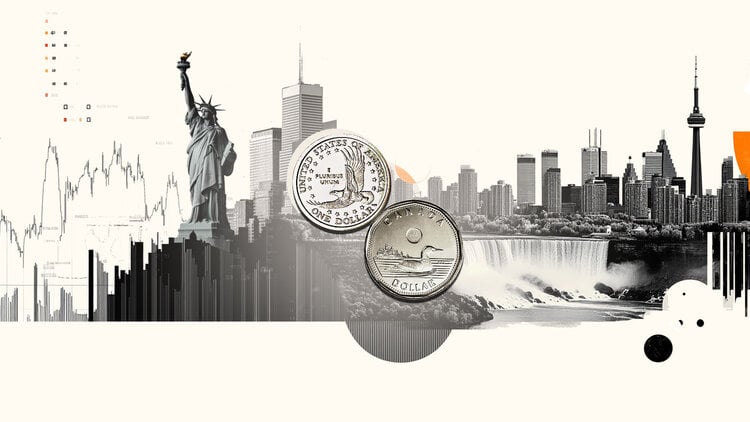- The USD/CAD goes back around 1,4240 in the American session on Monday afternoon.
- Canada’s products that comply with the USMCA trade agreement will remain exempt from Trump tariffs.
- Investors are increasing bets that the Fed will cut interest rates aggressively this year.
The USD/CAD It weakens about 1,4240, breaking the two -day winning streak during the American session on Monday afternoon. The Canadian dollar (CAD) advanced against the US dollar (USD) since Canada avoided new tariffs on its products in a global commercial war in expanded global war triggered by the president of the USA, Donald Trump.
Last week, Trump announced new broad tariffs for dozens of countries, imposing a 10% base tariff on all imports to the US and higher tariffs aimed at some of the country’s main commercial partners. Canada and Mexico were remarkably exempt in this round, except for car and steel and aluminum exports, which fall under separate tariff policies.
This development provides some support to the Loonie against the US dollar (USD). “The CAD is surpassing its non -USD peers since Canada remains relatively protected from the new tariff round,” said Jayati Bharadwaj, FX global strategist in TD Securities.
Investors increase their bets due to more interest rate cuts of the Federal Reserve (Fed) of the US this year as Trump tariffs increase the fears of recession in the USA. The markets are now valuing in almost 65% the probabilities of a Fed cut in May and the futures now point to about 100 basic points (PB) of rates reductions for December of this year, according to the CME Fedwatch tool. This, in turn, could drag USD down against their rivals in the short term.
Canadian dollar faqs
The key factors that determine the contribution of the Canadian dollar (CAD) are the level of interest rates set by the Bank of Canada (BOC), the price of oil, the main export product of Canada, the health of its economy, inflation and commercial balance, which is the difference between the value of Canadian exports and that of its imports. Other factors are market confidence, that is, if investors bet on riskier assets (Risk-on) or seek safe assets (Risk-Off), being the positive risk-on CAD. As its largest commercial partner, the health of the US economy is also a key factor that influences the Canadian dollar.
The Canada Bank (BOC) exerts a significant influence on the Canadian dollar by setting the level of interest rates that banks can provide with each other. This influences the level of interest rates for everyone. The main objective of the BOC is to maintain inflation between 1% and 3% by adjusting interest rates to the loss. Relatively high interest rates are usually positive for CAD. The Bank of Canada can also use quantitative relaxation and hardening to influence credit conditions, being the first refusal for CAD and the second positive for CAD.
The price of oil is a key factor that influences the value of the Canadian dollar. Oil is the largest export in Canada, so the price of oil tends to have an immediate impact on the value of the CAD. Generally, if the price of oil rises, the CAD also rises, since the aggregate demand of the currency increases. The opposite occurs if the price of oil drops. The highest prices of oil also tend to give rise to a greater probability of a positive commercial balance, which also supports the CAD.
Although traditionally it has always been considered that inflation is a negative factor for a currency, since it reduces the value of money, the opposite has actually happened in modern times, with the relaxation of cross -border capital controls. Higher inflation usually leads to central banks to raise interest rates, which attracts more capital of world investors who are looking for a lucrative place to save their money. This increases the demand for the local currency, which in the case of Canada is the Canadian dollar.
The published macroeconomic data measure the health of the economy and can have an impact on the Canadian dollar. Indicators such as GDP, manufacturing and services PMIs, employment and consumer confidence surveys can influence the CAD direction. A strong economy is good for the Canadian dollar. Not only attracts more foreign investment, but it can encourage the Bank of Canada to raise interest rates, which translates into a stronger currency. However, if the economic data is weak, the CAD is likely to fall.
Source: Fx Street
I am Joshua Winder, a senior-level journalist and editor at World Stock Market. I specialize in covering news related to the stock market and economic trends. With more than 8 years of experience in this field, I have become an expert in financial reporting.







